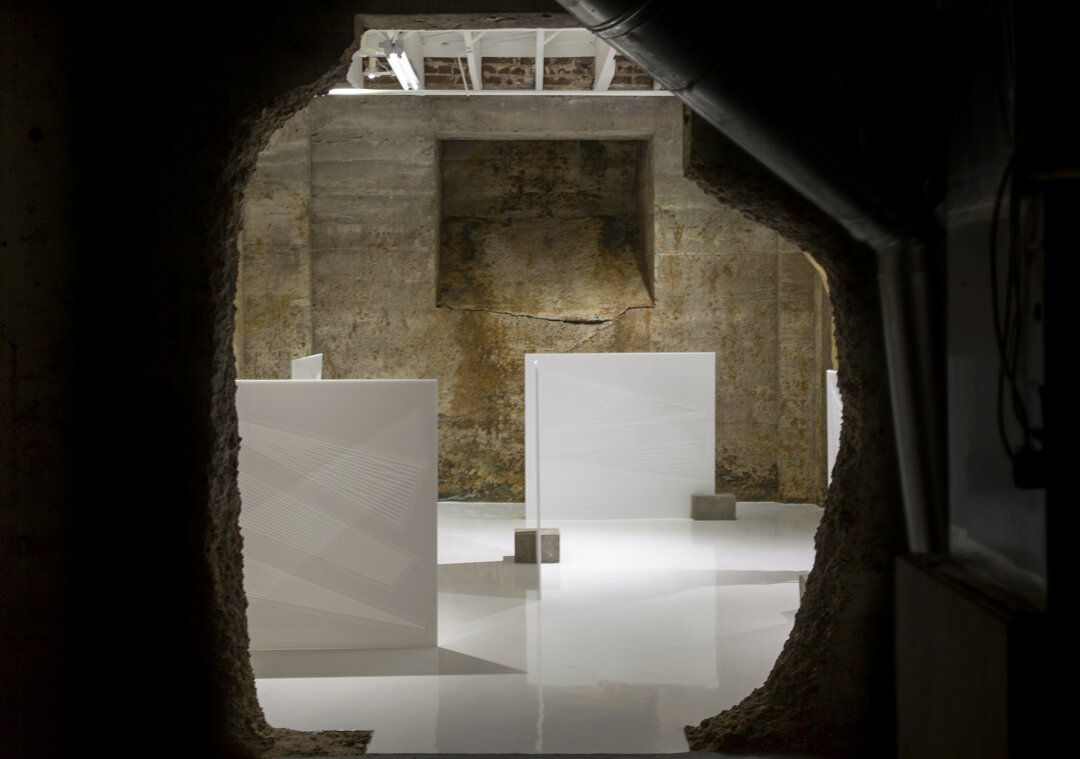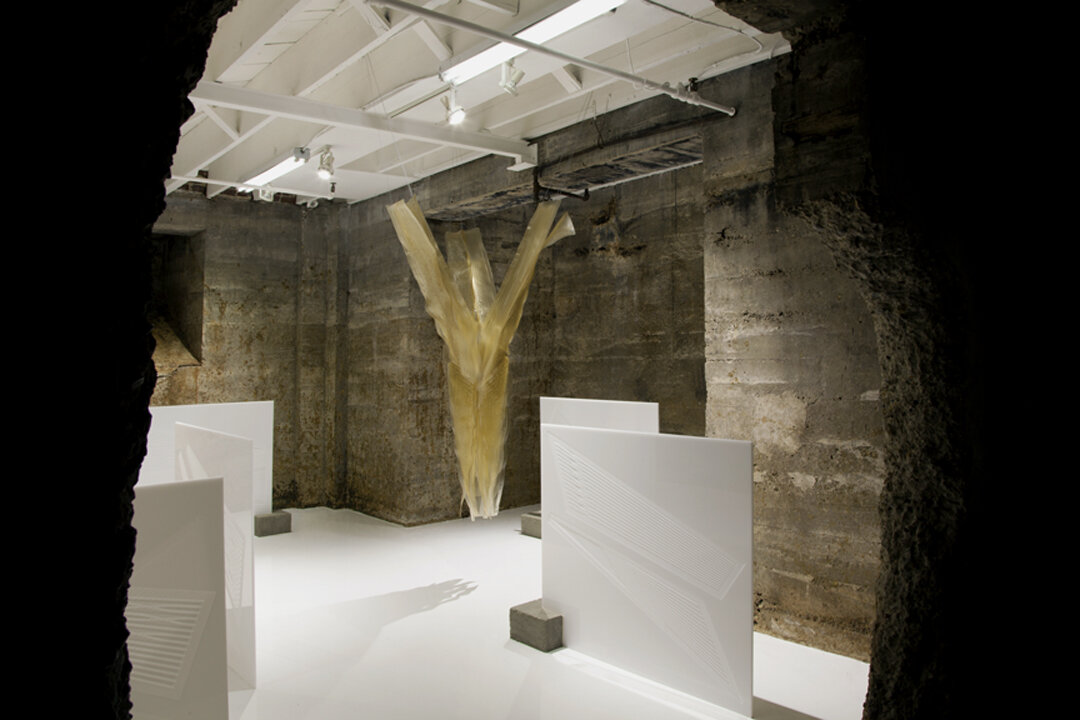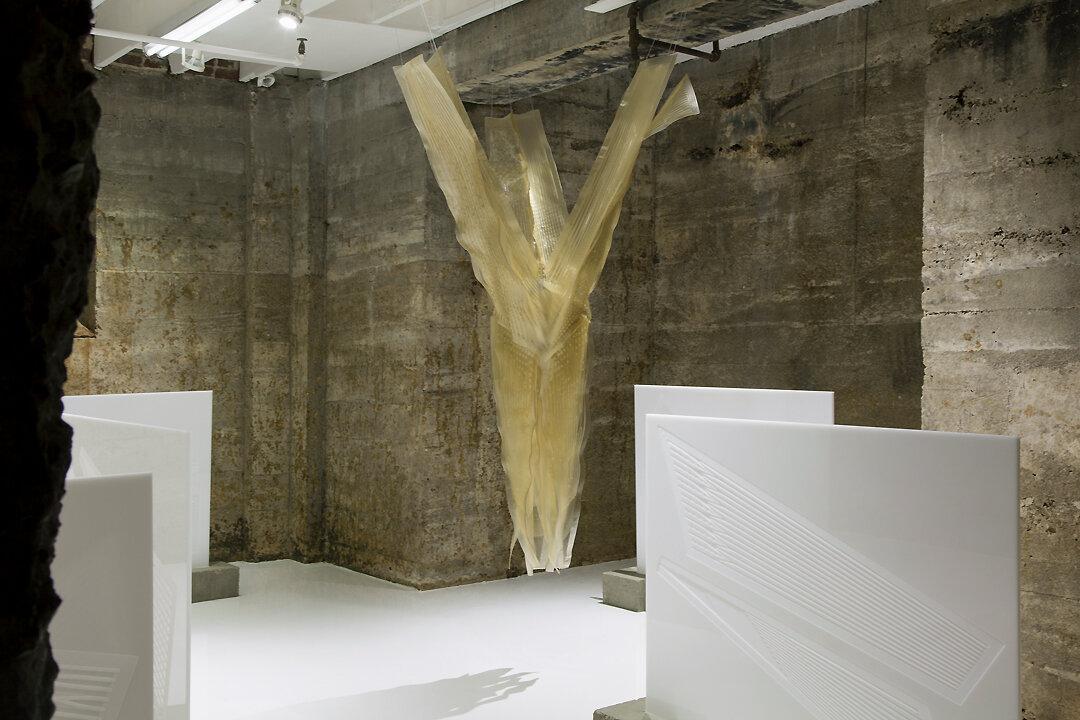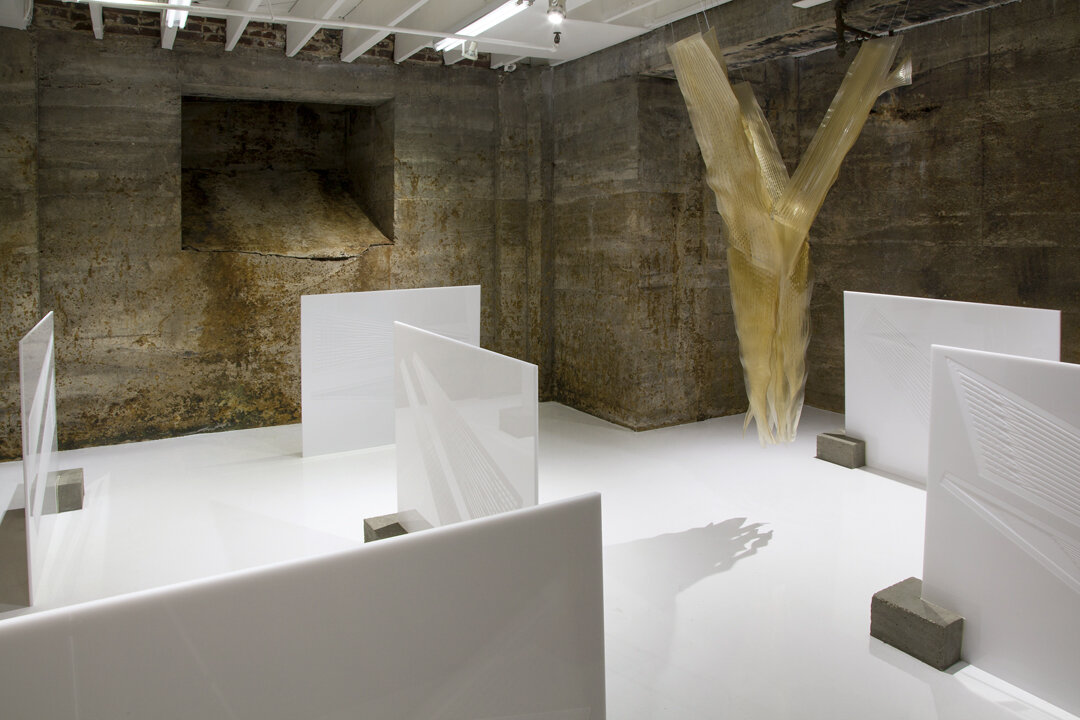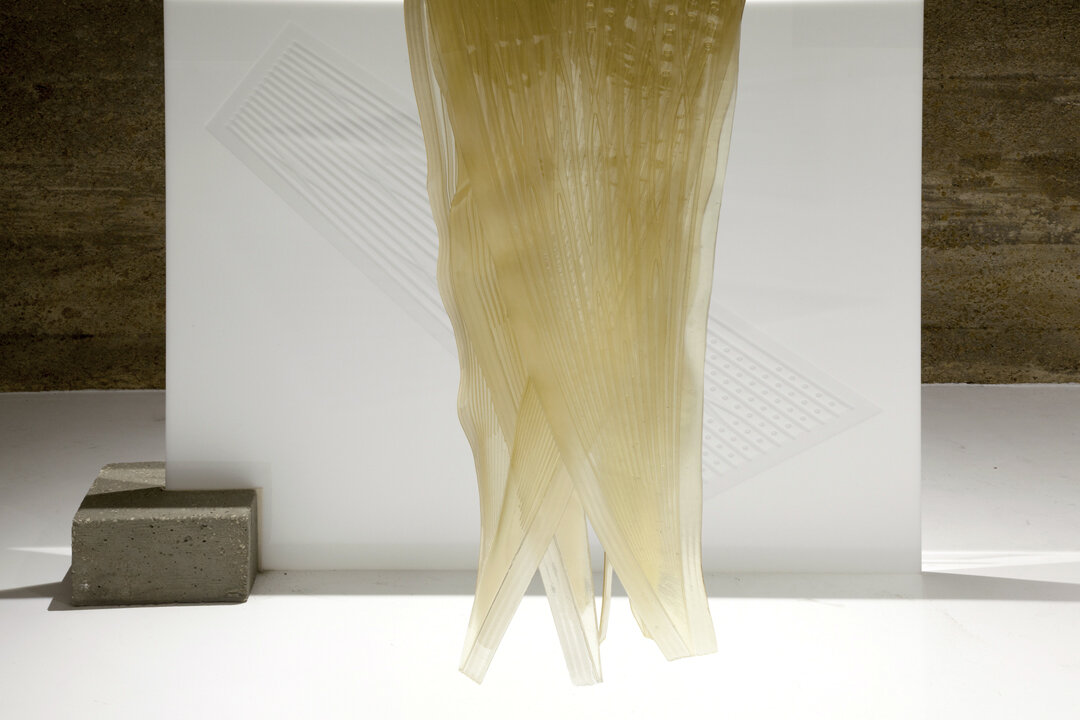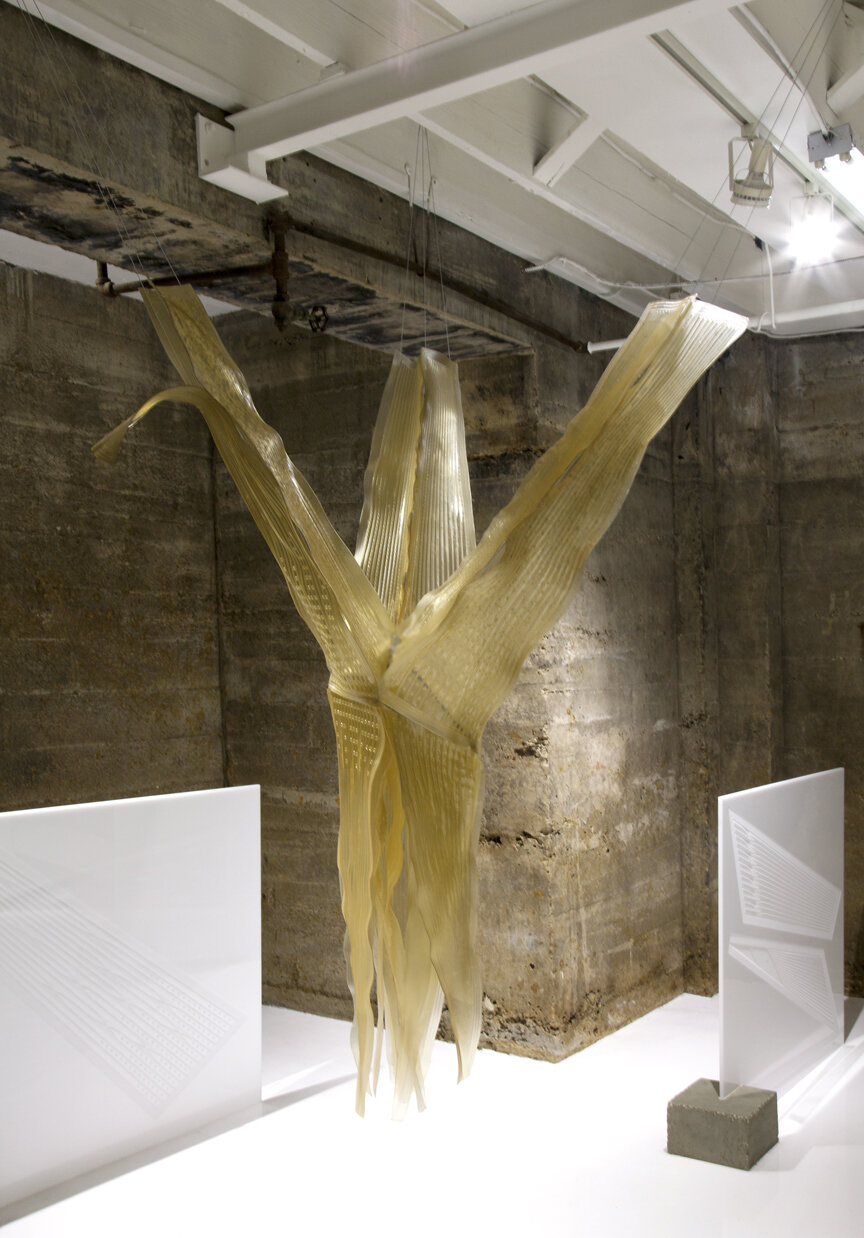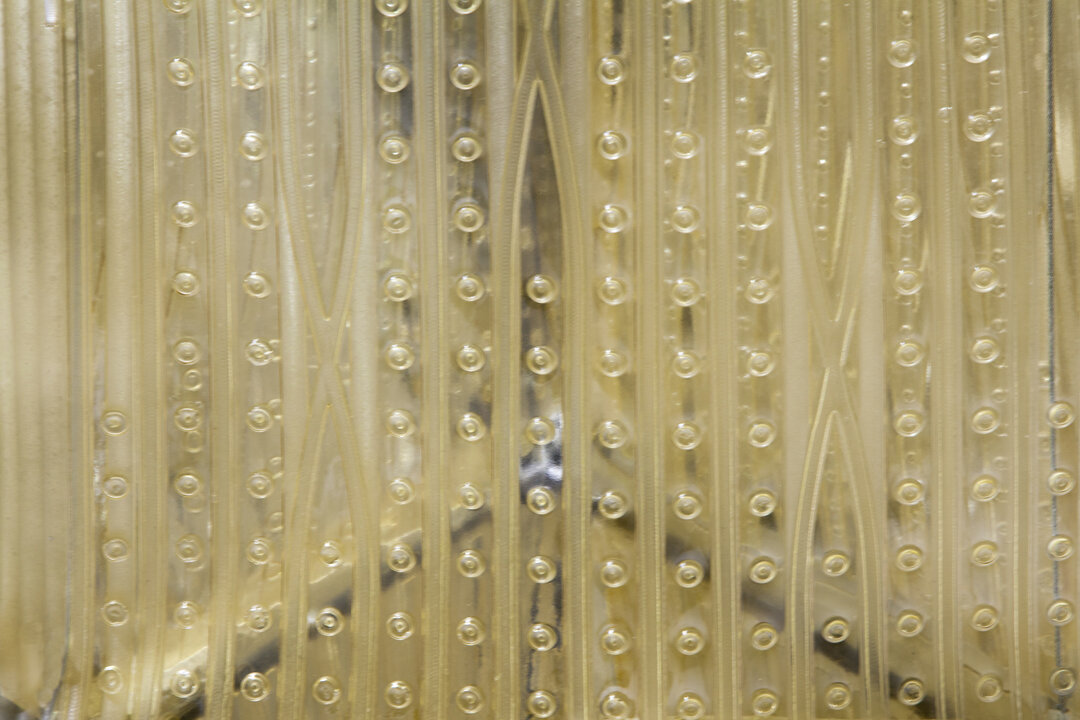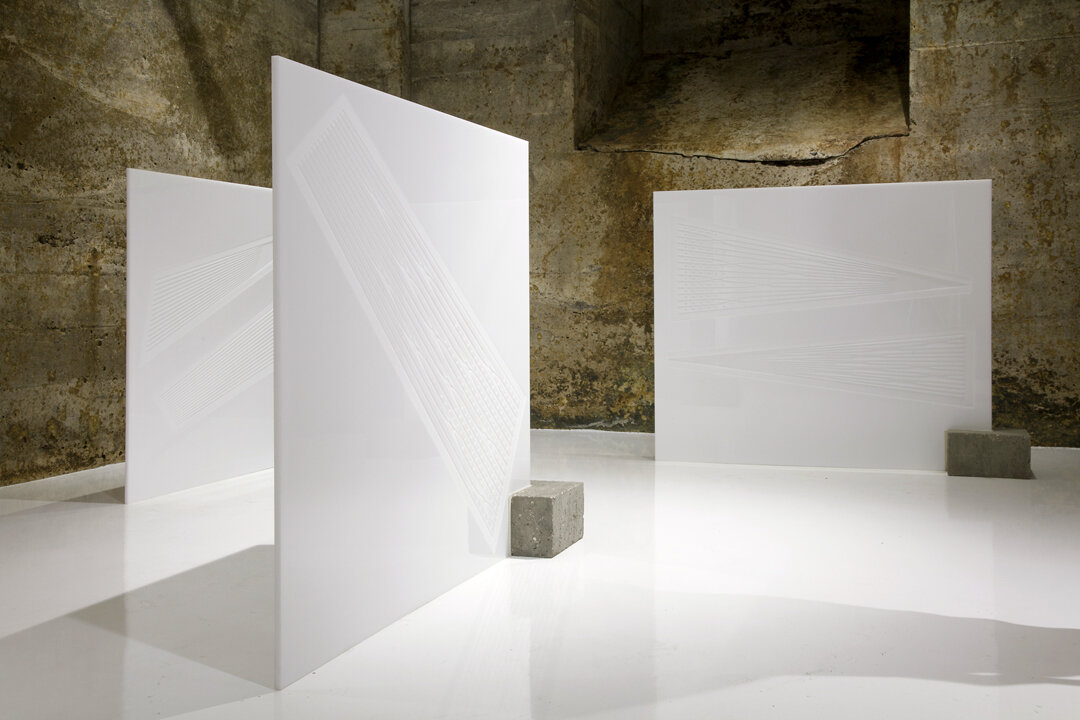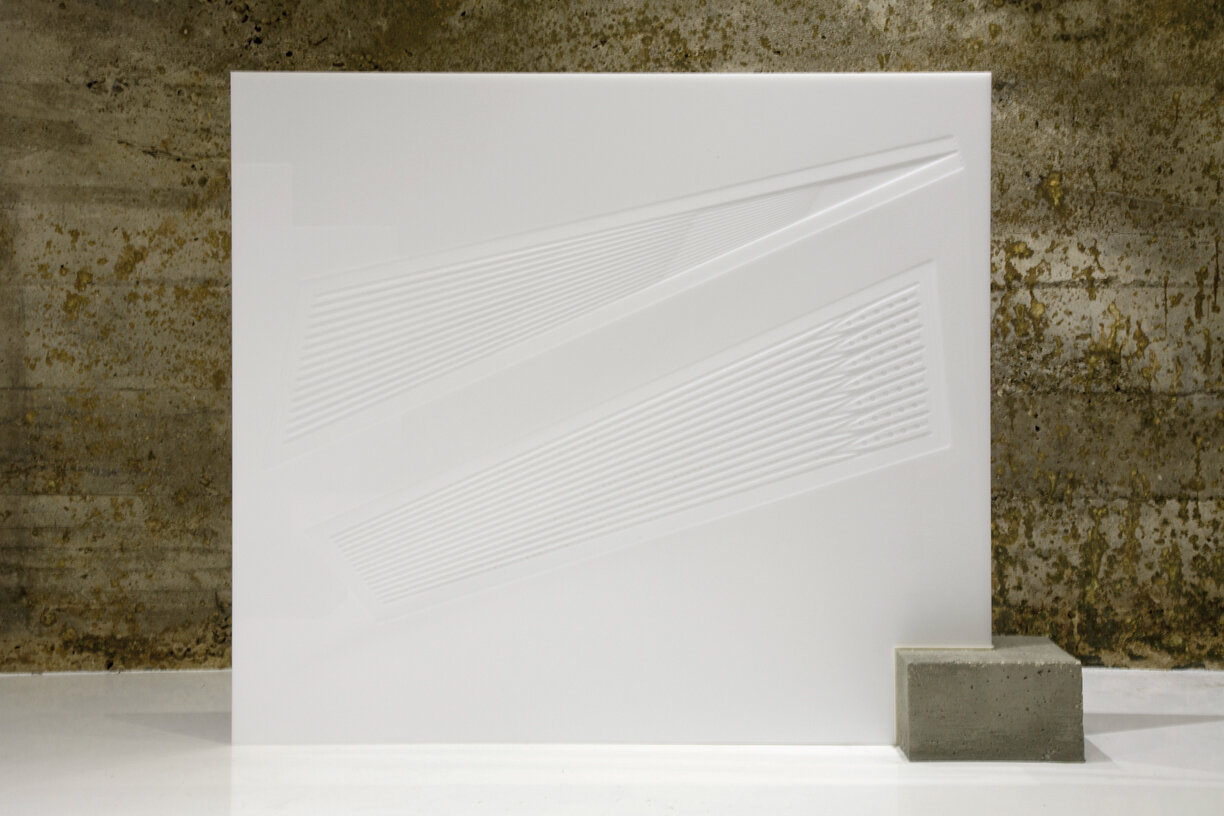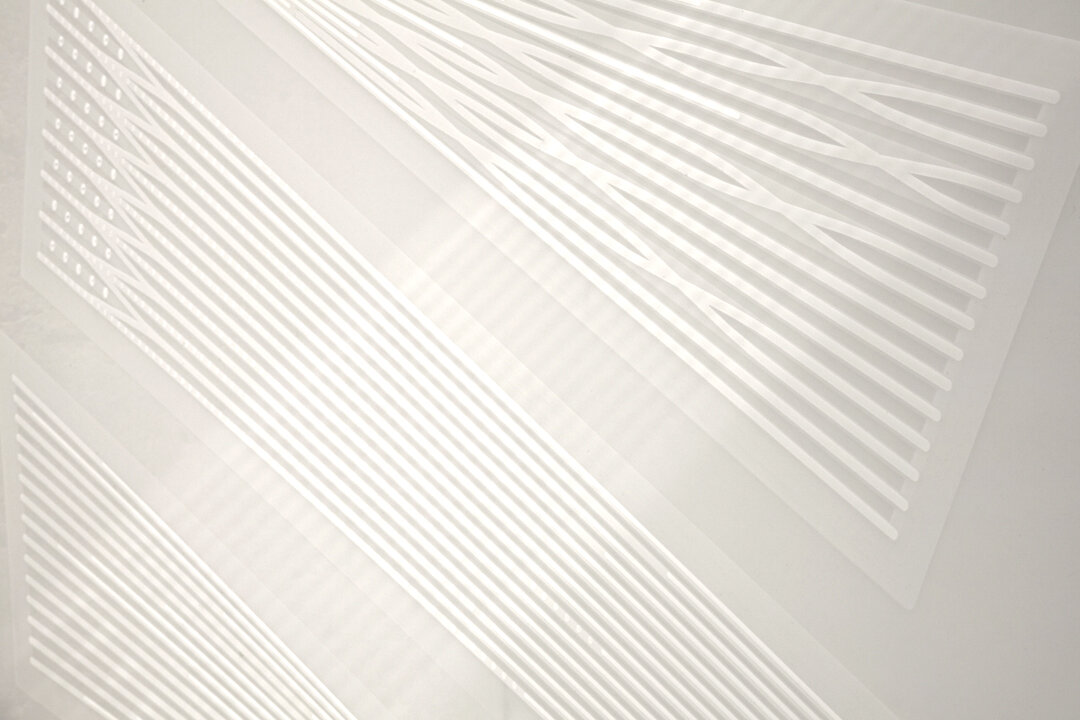Igor Siddiqui
Protoplastic
Tops Gallery is pleased to present Protoplastic, a new experimental project by architect Igor Siddiqui. Protoplastic stages simultaneous encounters between high and low technologies, renewable and non-renewable resources, as well as between permanence and disposability. The exhibition consists of a sculptural installation cast from biodegradable plastic and the acrylic formwork that was used to construct it.
Siddiqui frequently uses advanced digital technologies to design and fabricate his work. In this project the intricately patterned form is conceived digitally and inscribed into the acrylic surfaces using computer-controlled machinery. The resulting cuts produce highly detailed reliefs that function as both drawings and molds. He fills these reliefs with liquid plastic in order to cast the translucent surfaces tailored to aggregate into a larger sculpture. The plastic is made from scratch in his studio from nontoxic, compostable ingredients in a manner that reflects trial-and-error experimentation and open-ended research. With the sensibility of both an architect and an experienced home cook, Siddiqui has come across many opportunities to adjust the material's properties to suit his needs, but has also been challenged by its organic nature. The cast plastic sculpture is the evidence of this ongoing learning process as well as a prompt for considering material lifecycles. We may, for example, be repulsed by the moldy surface of the bioplastic as it slowly degrades even if it is entirely non-toxic and can safely return to our food supply system. On the other hand, the shiny, crisp and clean sheets of acrylic formwork may be perceived as attractive, but could easily end up in a landfill. In this way the material properties in Protoplasticprompt further questions about consumption, waste, time as well as the broader ecologies within which design production is inevitably situated. What would it mean, for example, to assume permanent ownership of every piece of petro-plastic that we consume rather than releasing it for disposal? How might we continue to reposition the issue of waste as a part of the design process? What if food supply and construction material industries were integrated into an interdependent system?
For this exhibition, the set of six acrylic pieces is presented as an edition of 3, while the bioplastic sculpture is designed to be composted. Each acrylic panel is set in a custom concrete base with wool felt padding. For further details on this exhibition, future projects, or Tops Gallery's program, please contact the gallery at info@topsgallery.com.
